How the style and shapes of bras have evolved over time
Gabi Stevenson

- Bras and bust supporters of all kinds have been around for centuries.
- After the domination of the corset in Western countries, the modern bra was patented in 1914.
Depictions of women wearing bra-like garments were found in a fourth-century mosaic in a Sicilian castle.
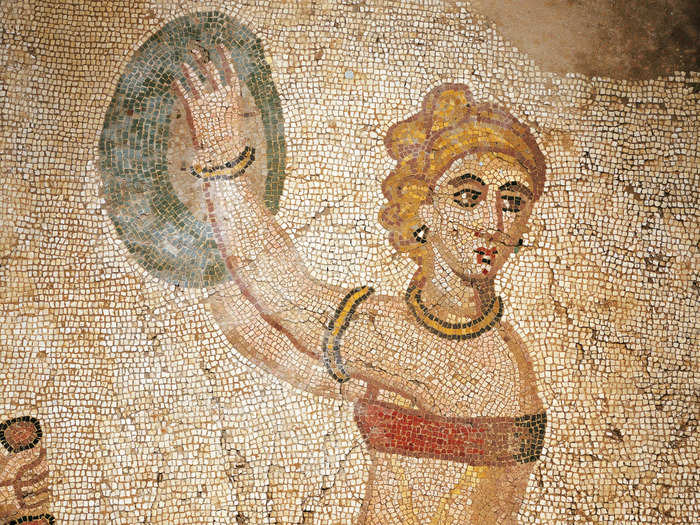
Although it's hard to pinpoint when the first iteration of bra was invented, experts know bust support has been around for centuries. Colleen Hill, the curator of costume and accessories for the Museum at the Fashion Institute of Technology, wrote for Google Arts & Culture that the origins of the bra can be traced back more than 1,500 years.
A mosaic in the Villa Romana del Casale in Sicily, Italy, depicts women wearing supportive garments while engaging in physical activity like lifting weights and throwing a discus.
In 2012, researcher Beatrix Nutz announced she found four bras in a 2008 excavation of the Lengberg Castle in Lengberg, Austria. Nutz said in an interview with Smithsonian Magazine that the bras, which date back to the 15th century, may have been used to "contain and flatten" large breasts.
The corset dominated women's fashion in western countries until the early 20th century.
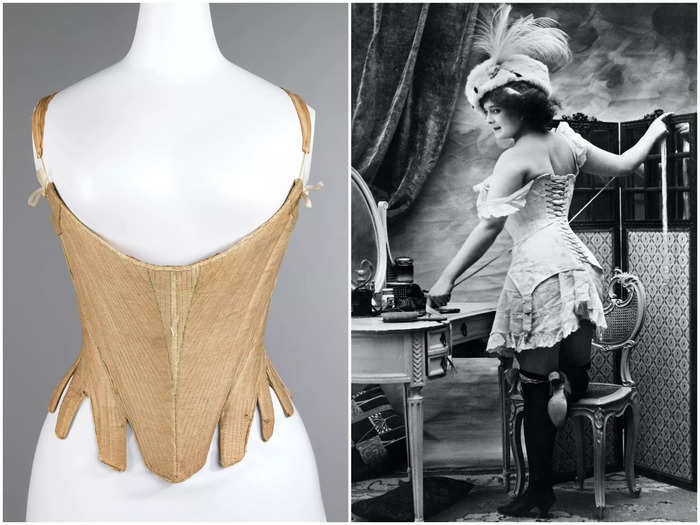
Corsets were designed to shape a woman's bust, as well as her waist and hips. Hill wrote that the goal of the garment in the 18th century was to "mold women's bodies into an inverted cone shape, emphasizing a narrow waist."
The foundational item, known for being stiff and restricting, was made with many different materials throughout centuries of its popularity, including cotton, silk, and linen. It got its structure from boning made of baleen, wood, metal, or even ivory.
As body shapes went in and out of style, so did corsets. Some were designed with contoured cups to emphasize the breasts, while others used plates to push the breasts higher and closer together.
A young New York socialite named Mary Phelps Jacob patented the first modern brassiere in 1914.

According to the Massachusetts Institute of Technology, Jacob came up with the idea for the garment while trying on a corset with an evening gown for an event. The item was too visible under the dress, so she fashioned a bra for herself out of two silk handkerchiefs and a pink ribbon.
The socialite's family and friends quickly caught on and asked her to make bras for them. She was awarded the patent for the "backless brassiere" in 1914, soon after setting up a business for the item using the name Caresse Crosby.
Jacob later sold the patent to the Warner Brothers Corset Company, who would go on to make $15 million from the bra in the next 30 years. The beginning of World War I in 1914 also contributed to the popularity of the modern bra — since metal was needed for the military, the corset fell into disuse, NPR reports.
The 1920s and 1930s brought about new changes for the bra.
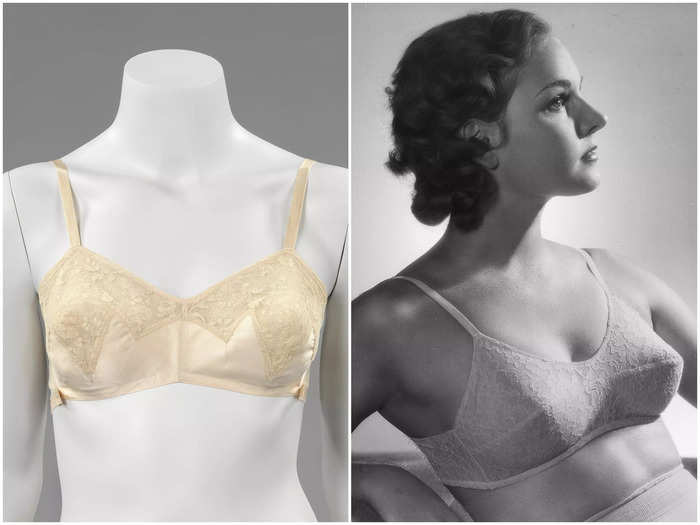
Women were first introduced to the lettered cup sizes during this time period. According to NPR, experts credit William and Ida Rosenthal, founders of Maidenform, or S.H. Camp and Co. with inventing the system.
Bandeau-style bras also gained popularity in the 1920s, with Hill writing that they were made to contain the breasts rather than support them. Because of their simplicity, they were easily manufactured and made by women at home.
As new advances like elastic and padding became more mainstream, the bra industry boomed in the 1930s.
By the 1950s, Hollywood stars were making a big impact on bras and breasts.
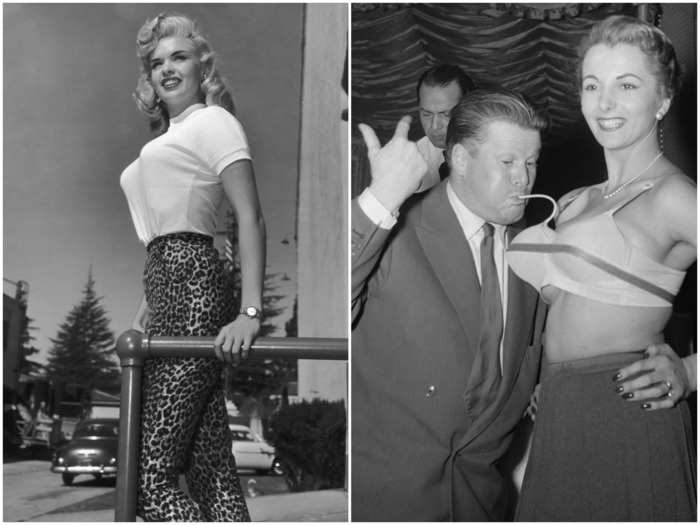
Journalist and author of "Breasts: A Natural and Unnatural History" Florence Williams told Insider that actresses like Jayne Mansfield and Marilyn Monroe popularized the look of large breasts during the decade.
Circulated images of these women lead to highly technical garments like the bullet bra and even an inflatable bra. The 1950s also saw the rise of Christian Dior's "New Look," which celebrated ultra-femininity with full busts and cinched waists.
"There was definitely, I think, some pressure on women to try to fit into this post-World War II idealization of women being sexy, women being domestic, women being at home," Williams said.
"After the sort of relative freedom of women working in factories during World War II, there was this retrenchment and reaction to keep women at home, and that was reflected through fashion and through this idealization of large breasts in popular culture," she continued.
Women and designers began to reject enforced femininity in the 1960s, leading to more natural silhouettes.
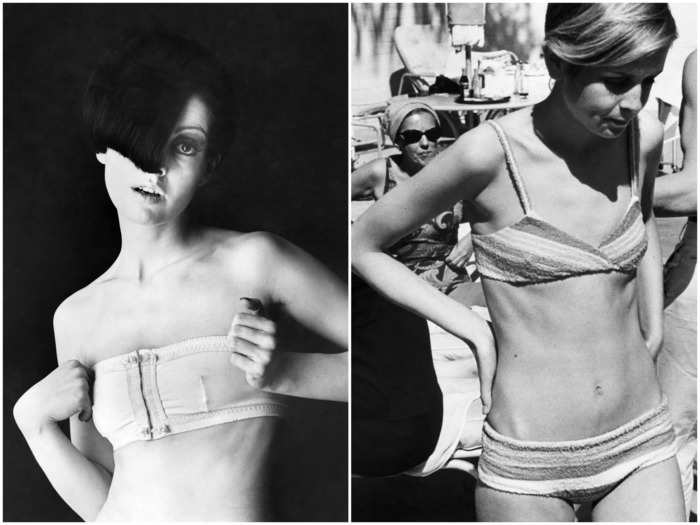
Williams told Insider that even though stars like Mansfield and Monroe continued to be popular into the 1960s, emerging stars like model Twiggy put more androgynous body types and smaller breasts on display.
Another leader in the decade's fashion scene was Rudi Gernreich, an Austrian-born American designer who started his career as a dancer. His famous inventions include the monokini and the "No-Bra" bra — a soft, sheer undergarment made with nylon and thin straps.
Vogue archive editor Laird Borrelli-Persson wrote on August 8, the day which would have marked Gernreich's 100th birthday, that his designs were "intensely body-focused and freeing, and noticeably lacking in prudery."
The sports bra took off in the 1970s and 1980s after three friends in Vermont sewed two jockstraps together.
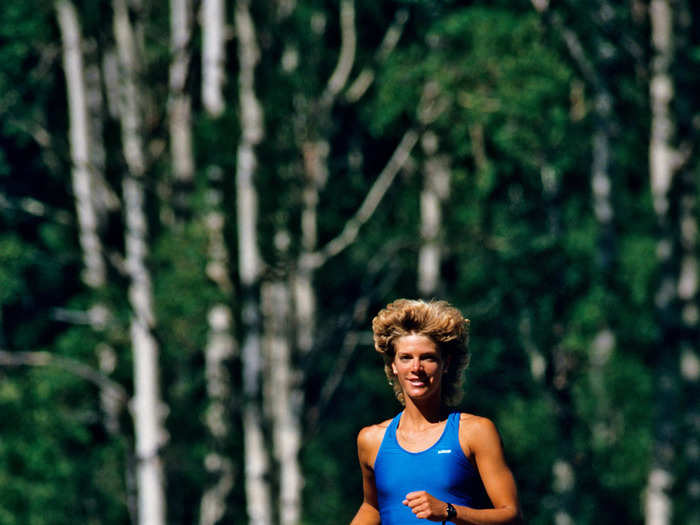
Title IX of the Education Amendments of 1972 prohibited discrimination on the basis of sex in schools and other educational programs. The passage of this law increased women's and young girls' participation in sports — and soon they needed a bra to support and protect their breasts.
The "Free Swing Tennis Bra" was the first commercially available athletic bra, introduced by Glamorise Foundations Inc. in 1975, per Deadspin. Although it was marketed to active women, it didn't provide the necessary support and structure for highly physical activities like running.
In 1977, jogger Lisa Lindahl, costume designer Polly Smith, and Smith's assistant Hinda Schreiber came up with a new idea for an athletic bra after seeing Lindahl's husband with a jockstrap stretched around his torso. Smith cut and sewed two jockstraps together, creating a bra with wide straps and a criss-cross back, according to pictures shared by Defector.
"I went running the next day in this jockstrap contraption and knew that this was the product that was going to work," Lindahl told Williams on a 2017 episode of the "Outside" podcast.
First called the "jockbra" and later renamed the "jogbra," the first sports bra was so revolutionary that its inventors were inducted into the US National Investors Hall of Fame earlier this year, BBC reports.
The push-up bra reached the height of its popularity in the 1990s and 2000s.
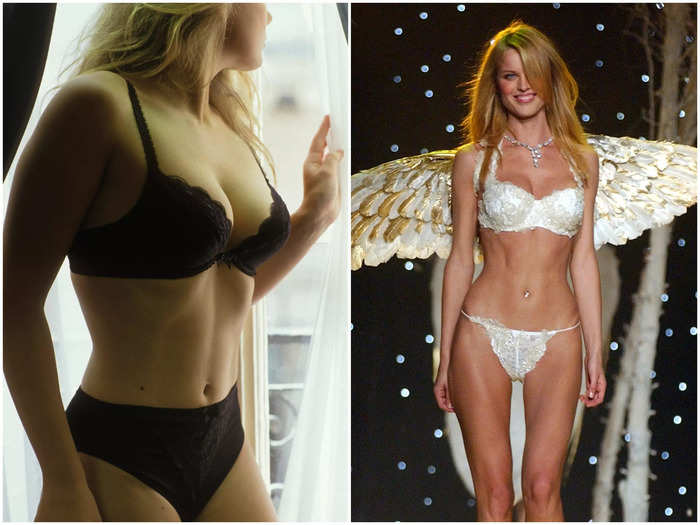
Women's Health Magazine reports that the first push-bra was invented by Frederick Mellinger, the designer behind lingerie brand Frederick's of Hollywood, in 1948.
The style was particularly successful in the 1990s. According to its website, bra brand Wonderbra made it into the Guinness Book of World Record for selling more than 1.6 million units of its "Dream Life" push-up style in 1996.
Thanks to the rise of Victoria's Secret and its annual fashion show in the late 1990s and 2000s, many women became familiar with the brand's heavily padded Miracle Bra and Bombshell Bra — a "maximum-impact push-up" the brand still says can add two cups sizes to a woman's bust.
There are more bra offerings than ever for people in 2022, from matching sets to silky bra tops.
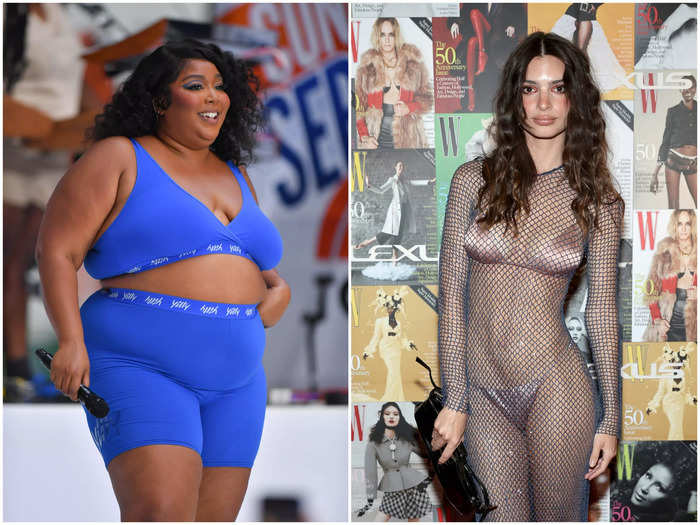
In recent years, celebrities and models of all sizes, including Emily Ratajkowski, Kim Kardashian, Lizzo, and Florence Pugh, have been photographed wearing bras as tops. Vogue named the bra top as a micro-trend in 2021 thanks to its "subtle sultriness."
The COVID-19 pandemic and subsequent quarantine also prompted a need for comfortable loungewear. Although bralettes and wireless bras are highly available at many major retailers, Refinery29 reported last year that many women were ditching their bras, citing a "period of personal reckoning."
When it comes to what's next for bras, Williams said body dysmorphia and the pressures of social media should be included in the conversation.
"I'd love to see us having more conversations with young people of all genders about body acceptance and body dysmorphia, and valuing our bodies for what they provide, what they do for us, how strong they make us, how miraculous they are, and not necessarily that they look a certain way," she said.
Popular Right Now
Popular Keywords
Advertisement